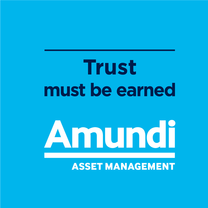Newsroom
Global Investment Views - July 2019
London, UK, July 1, 2019
Central banks fuel markets: illusion vs reality
The journey from market complacency to awareness of fragilities is in full swing, and the market correction in May is part of that, as is the recent recovery fuelled by dovish Central Banks (CB). Aware investors should recognise that the late cycle phase and mature market trends require improving fundamentals and positive political events to deliver sustainable uptrends in risk assets. But, it is difficult to see such improvements happening in the short term. Purchasing Manager Indices have been declining and what we are seeing is a deterioration in the ‘quality’ of growth. Headline figures of growth are still moderately positive, and not far off our expectations of few months ago, but the composition of growth has changed. Most components of growth are of concern to policy makers beyond the decline in trade growth. We particularly pay attention to the decline in investment growth. However, as far as domestic demand is concerned, it remains healthy, thanks to sound labour markets.
Can this equilibrium hold, given the fragilities overall have increased?
In our view, risk assets will continue to face significant hurdles, with sharp selloffs occurring due to data being below expectations, disappointments related to trade negotiations, and repricing of expectations based on changes in CB policies, which will continue to trigger volatility. In this situation, the behaviour of CB becomes crucial again: markets all over the world are currently pricing in rate cuts, with more than 100 bps expected in the US before the end of 2020 and lower rates also likely in Europe, Japan, Canada, Australia and New Zealand. Promises of interest rate cuts and easier financial conditions will likely keep the Goldilocks narrative alive and help markets to avoid persistent downturns in stock prices. However, there are still risks of policy mistakes being made by CB: the line between ‘preemptive’ or ‘reactive’ CB cuts is very thin. While a pre-emptive Fed will likely be market-friendly for equities, a Fed perceived as reactive, or as starting an aggressive easing cycle, would probably be of concern to investors, as they would start to read higher recession risks in the numbers.
Can we expect there to be any positive developments on this journey?
If our central case is confirmed, the Fed could deliver a pre-emptive cut this year, responding to risk assets’ appetite for liquidity. With lower rates in the US, China could have more space for monetary policy easing. A stabilisation of growth could be possible. Countries in Europe with fiscal space could experience a fiscal boost thus sustaining internal demand. Regarding the US, this will be more of a story post-2020 election. The markets would make a toast if a deal between China and the US is reached, which could happen in the medium term, even if tensions between the two countries continue related to a much deeper and long term geopolitical strategic game.
Setting the unpredictable aside, we focus on what is reasonably predictable ‒ ie, a further extension of this extra-long cycle ‒ and we build our investment strategies around the following convictions:
- A positive stance on credit and spread products. Search for yield is definitely in focus, thanks to the refreshed CB dovishness. We keep a cautious and flexible approach to avoid areas of fragility;
- A constructive stance on EM Bonds. EM continue to be supported by the Fed dovishness and expected USD weakening. Here the focus on vulnerability (investing in the less fragile countries) will be key at this point of the cycle as weaker demand from DM tends could affect some EM;
- A moderate defensive stance on equities. Lacking strong fundamental support, we prefer to play the Goldilocks scenario via credit. That said, the European equity market seems to have already priced in the worst case scenario. Valuations are attractive and positive surprises could support the asset class on a relative basis;
- The FX market as a liquid instrument to play trade disputes and political uncertainty.
There is not much room to make mistakes in this sort of market: potential gains and losses show an asymmetric profile. We recommend keeping a cautious risk stance. We think it is key to protect YTD gains (which are not far off our goals of the beginning of the year), as we are well aware of an overall increase in fragilities.
Expert
Vincent has been Group Chief Investment Officer since February 2022. Previous to that, he was the Group Deputy CIO of Amundi since 2015. He is a member of the Globa[...]
Read moreAbout Amundi
About Amundi
Amundi, the leading European asset manager, ranking among the top 10 global players[1], offers its 100 million clients - retail, institutional and corporate - a complete range of savings and investment solutions in active and passive management, in traditional or real assets. This offering is enhanced with IT tools and services to cover the entire savings value chain. A subsidiary of the Crédit Agricole group and listed on the stock exchange, Amundi currently manages more than €2.3 trillion of assets[2].
With its six international investment hubs[3], financial and extra-financial research capabilities and long-standing commitment to responsible investment, Amundi is a key player in the asset management landscape.
Amundi clients benefit from the expertise and advice of 5,600 employees in 35 countries.
Amundi, a trusted partner, working every day in the interest of its clients and society
Footnotes
- ^ [1] Source: IPE "Top 500 Asset Managers" published in June 2024 based on assets under management as of 31/12/2023
- ^ [2] Amundi data as at 31/03/2025
- ^ [3] Paris, London, Dublin, Milan, Tokyo and San Antonio (via our strategic partnership with Victory Capital)
Footnotes




